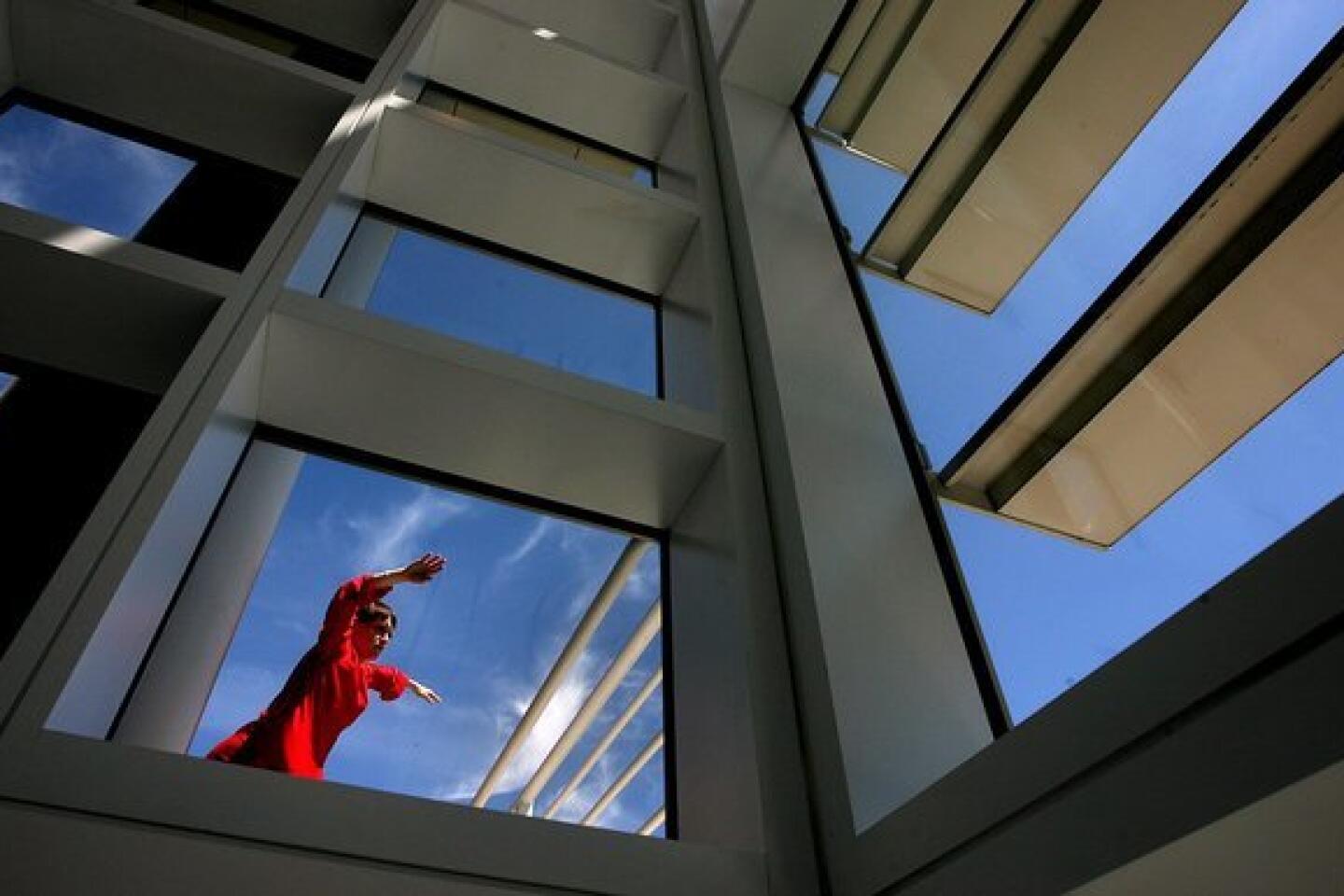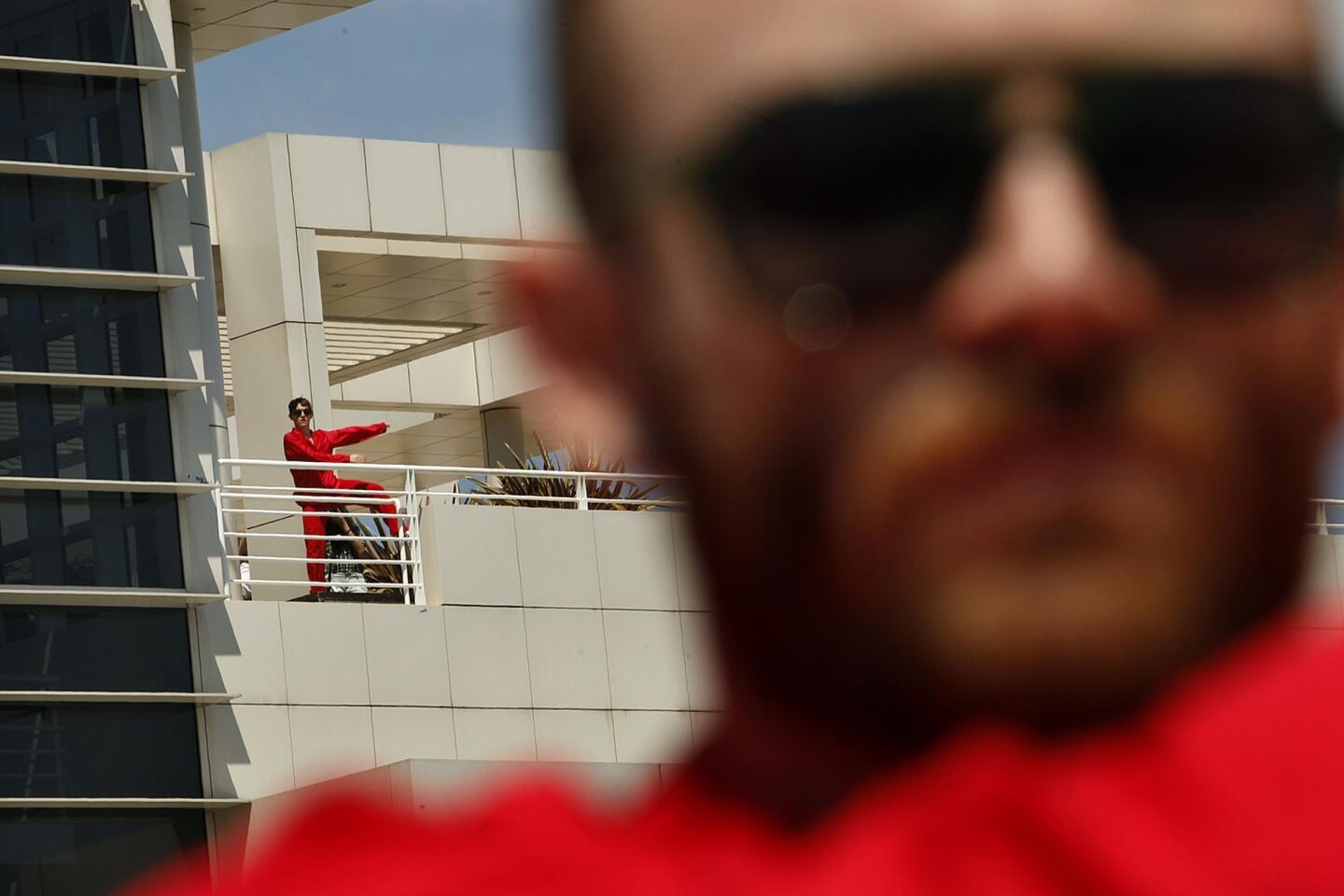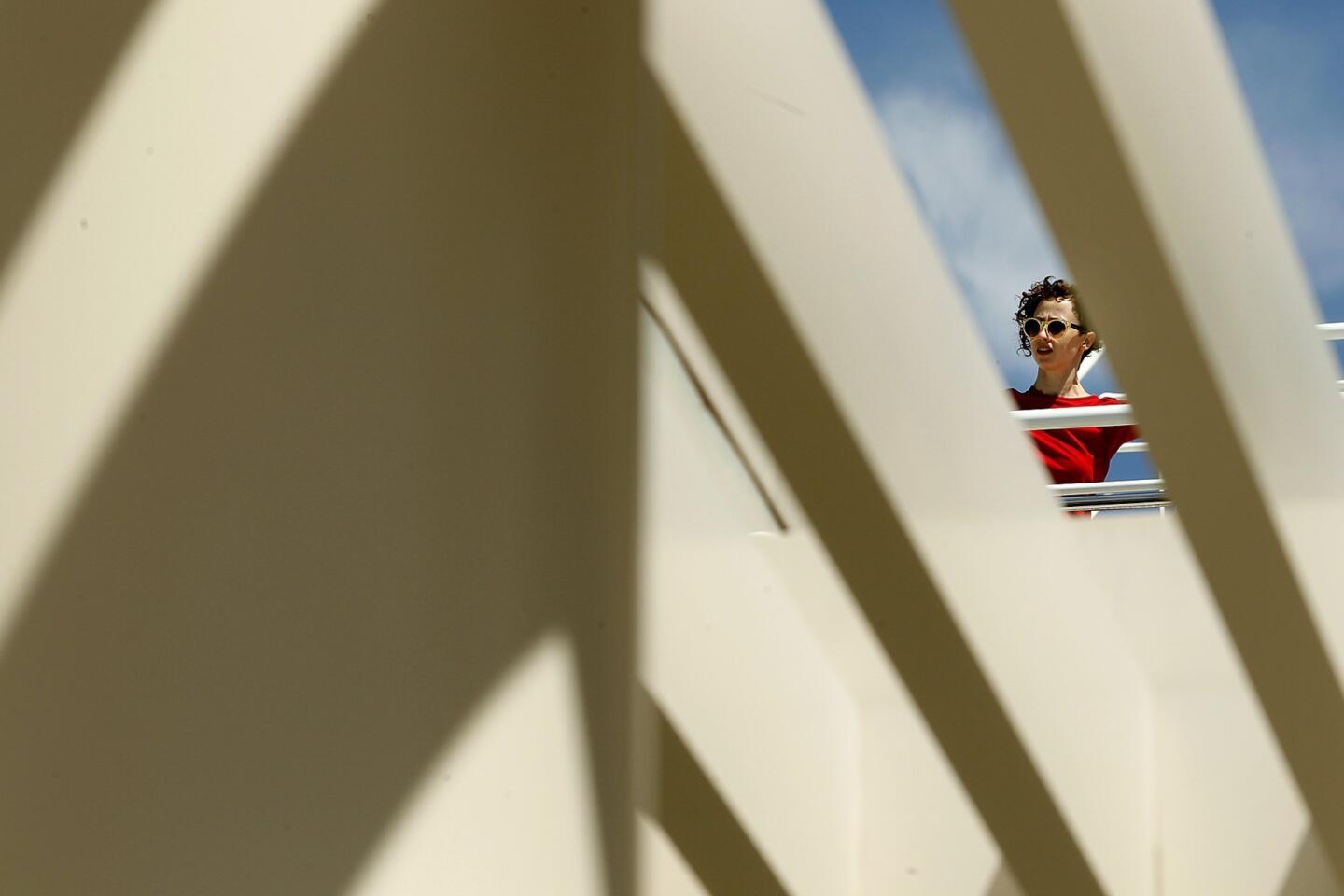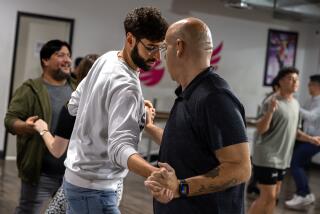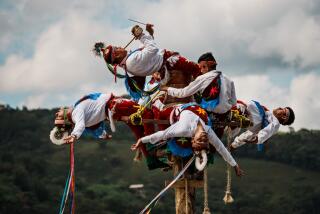Foreigners hot step it to Colombian city for salsa lessons
Cali, COLOMBIA — It’s a long way to go for dance lessons, but that’s why French law student Graziella Giacomarra has traveled 6,000 miles to Cali, to learn some of salsa’s most intricate and high-energy steps.
This month at the Sondeluz dance studio on the second floor of a drab commercial building, Giacomarra was hot-stepping to a blistering, brass-driven salsa beat, her feet blurring in close unison with those of her teacher, Luz Ayde Moncayo.
It was the eighth week of classes for the 24-year-old Lyon native who hopes to someday be an agent for professional dancers. The instruction is paying off. She more than keeps up with Moncayo, a former member of a traveling salsa troupe.
“Cali is famous for the best salsa dancers in Colombia, maybe the world,” Giacomarra said. “The rapid steps the men dancers do and the way women move their hips, it’s very cultural. And there is the ambience of Cali. There is something special in the air here.”
Inroads of Latin culture and the popularity of TV shows like “Dancing With the Stars” increasingly have put salsa’s sensual moves in the spotlight. And even though the music and dance didn’t originate in Cali, this city of 4 million has become a hotbed and leader in the form, a fact well known to aficionados.
Giacomarra’s trip was no lark; she financed it with earnings from menial jobs as she finished her law studies. She started lessons at another of Cali’s 70 salsa schools but ended up at Sondeluz by word of mouth. Instructor Moncayo said 70% of her students are foreigners who come from as far as Japan, Germany and Peru.
Attracted mainly by the Spanish colonial fortress city Cartagena and Colombia’s natural beauty, international tourists are arriving in ever greater numbers. Last year, the 1.7-million foreign visitor total represented a 7% annual increase, according to Proexport, the country’s trade promotion agency. “Now that people are less afraid of coming to Colombia, we have travel agents and tours bringing people here,” Moncayo said.
For decades, salsa music has flourished in this southwestern city in a valley carpeted with sugar cane. Although Cali is an inland city, it’s warm and sun-splashed climate doused with periodic monsoon rains give it a Caribbean feel. That impression is reinforced by strong influence of Afro-Colombians who have migrated here from the Atlantic coast, often to escape ongoing armed conflict.
It’s only been in recent years, however, that salsa has become an important tourism generator. It’s producing economic benefits for the city’s poor Afro-Colombians barrios where most of the salsa schools are and where the best dancers come from.
CHEAT SHEET: Spring Arts Preview
Travel agent Eleana Rioja of Rioja Pacific Tours said her company books an average of 30 tourists a month, mainly from the U.S., Ecuador and Germany, who come for weekends — or weeks — of classes. She’s made numerous bookings for the World Salsa Festival to be held here in August.
“Cali’s cultural agenda is really fed by the Afro-Colombian presence and history and that has a global appeal,” Rioja said, noting the city is also hosting the Third Annual World Summit of Afro-Descendent Leaders in September, to which President Obama has been invited.
Many tours combine classes with visits to local salsa bars, where foreigners can mix with the locals to pick up pointers and partners. There are also scheduled stops at the several nightclubs with choreographed salsa shows. The most popular is El Delirio, a Las Vegas-style dance and music revue held under an enormous circus tent that has sold out its monthly shows for the past six years running.
Spanish director Chus Gutierrez will soon start shooting a $2-million budget movie about a medical doctor from Madrid who comes to Cali for a medical conference and falls in love with an El Delirio dancer, to be played by Colombian telenovela star Carolina Ramirez.
“The dancers here are unbelievable,” said Gutierrez, who has made several dance-related films. “They’ve converted salsa into an entirely new form. And salsa has given them a way of escaping the crude reality of the barrio.”
PHOTOS: Arts and culture in pictures by The Times
Sixteen of El Delirio’s 180 regular salsa dancers just got back from a tour of China and other Asian countries sponsored by the Colombian government, said the show’s artistic director, Andrea Buenaventura.
“Cali is a multicultural city which doesn’t really have a music or dance style of its own. With salsa, it’s taken on an agglomeration of rhythms from other places, including Afro-Colombians from the Pacific, Cubans, Puerto Ricans and even New York,” Buenaventura said. “It’s been cooking for 20 years, and now it is all really becoming visible.”
Alejandro Ulloa, a popular culture professor at Universidad del Valle here and author of three books on salsa, said that although it did not originate in Cali, the city has become one of its hotbeds. “You could trace salsa’s roots back to Spanish Harlem in the 1960s, to LP records produced in New York and then brought to Cali by sailors via Buenaventura,” a Pacific port city 80 miles west of Cali, Ulloa said.
“Those records were first played in Cali’s red light district but then were bought by collectors or dance clubs to dance rooms in poor barrios. Cali’s salsa is a fusion of all those influences,” Ulloa said.
Ulloa defined the local salsa dance style as “extremely competitive with a lot of new choreography, high-speed dance steps and acrobatics.”
Tentative rather than acrobatic would define the style of Steven Wick, a 29-year-old import-exporter from Arcata, Calif., who was taking beginner classes at Sondeluz. Wick was introduced to salsa on a recent trip to the Dominican Republic, where he was told Colombian dancers were on the cutting edge. He said dancing is one of the features of Latin culture he likes most.
“In the States, we don’t have a culture of dancing with your peers like you do here, and I really enjoy the interaction you get between two people that salsa gives you,” Wick said. “I also like the music. It’s got a push and pull to it that really makes you want to move.”
Kraul is a Bogota-based special correspondent.
More to Read
The biggest entertainment stories
Get our big stories about Hollywood, film, television, music, arts, culture and more right in your inbox as soon as they publish.
You may occasionally receive promotional content from the Los Angeles Times.
